Artist-in-residence in Japan, Autumn 2012
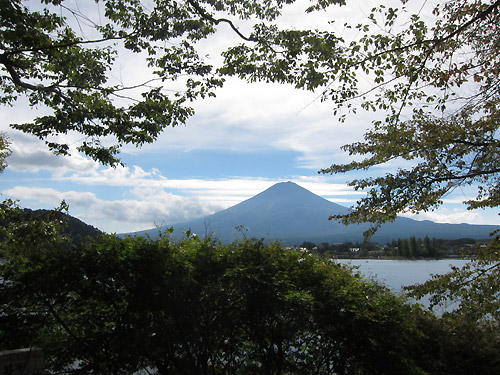
In October/November 2012, I participated in the MI-LAB mid-career
artist-in-residence program in Japan. MI-LAB, Mokuhanga Innovation Laboratory,
is a program which supports Japanese woodblock printmaking in contemporary form.
It is the follow-up program of Nagasawa Art Park, where I learned Japanese woodblock
printmaking in 2003. The mid-career program gives international artists, who
already are working with the technique, the chance to deepen their knowledge,
with a work stay and classes. I was very happy about this opportunity and want
to tell here about it.
The program started in Tokyo with a class in sharpening knifes.
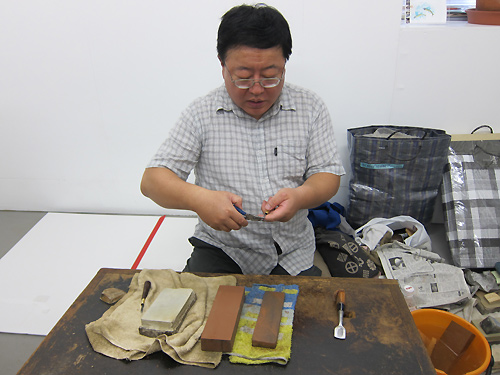
The teacher, Mr. Sekioka, is one of the two last master cutters
with apprentices in Tokyo.
The residence, there we then went to for working on prints,
is located in Kawaguchi on the foot of Mt. Fuji. Mt. Fuji: symbol for Japan
and particularly the Japanese woodblock with countless prints after drawings
from artists as Hokusai, Hiroshige to Hiroshi Yoshida and others. What a prospect
to be there and walk in the footsteps of these masters. That is what I thought,
and of course I had seen photographs of the mountain: beautiful. But when I
saw it in real, it was without comparison, each time.
After arrival I just started to work. I wanted to create a print
with a view to the mountain across the lake. The residence was on the Western
end of Southern lakeside. Mt. Fuji is South-East from it. I went to the Northern
lakeside.
It was a sunny day. During my walk around the lake, I again and
again saw the mountain appear behind houses or trees. I passed by Kawaguchiko's
Art Museum, went in and browsed through a catalogue with woodblock prints of
Mt. Fuji. All these prints were very good works and I asked myself if there
was a point in adding something.
When I moved on, I came to a beautiful spot with a good view to the mountain
and I set down under a cherry tree. The water was sparkling, the branches were
moving, a cloud slowly moved in front of the mountain. I made a sketch. Later
the sky became cloudy.
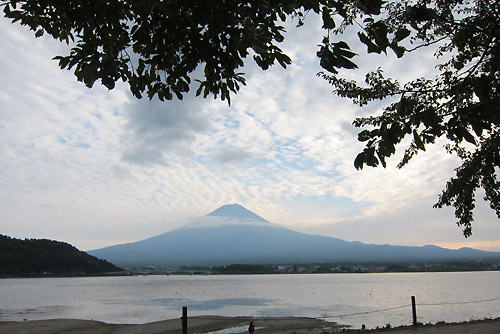
I started cutting plates.
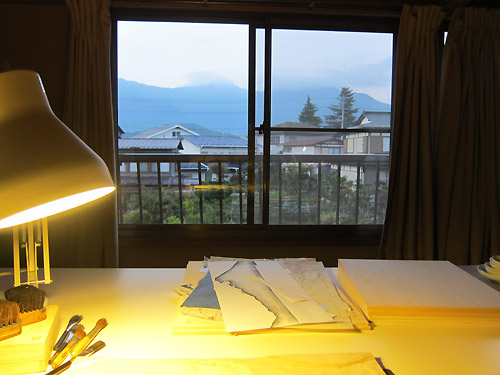
The house was close to the lake. I took a walk every day.
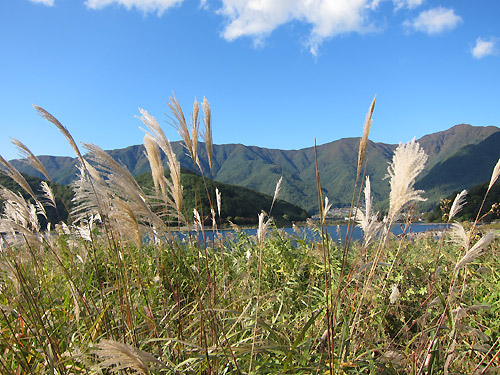
Everyday the lake was different.
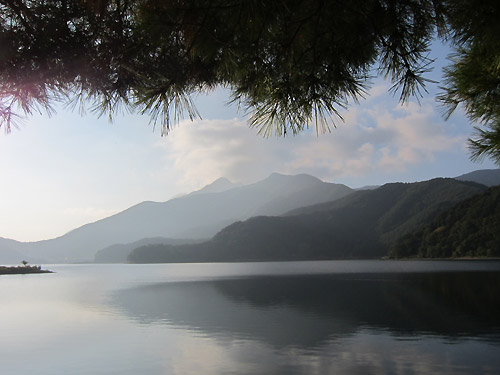
There grows the suzuki grass, prevalent theme of Japanese
poetry.

I wanted to make a print with the lake and the grass. Exploring
the Western lakeside I had found a beautiful spot. I went there one evening.
While I was drawing, the sun went down.
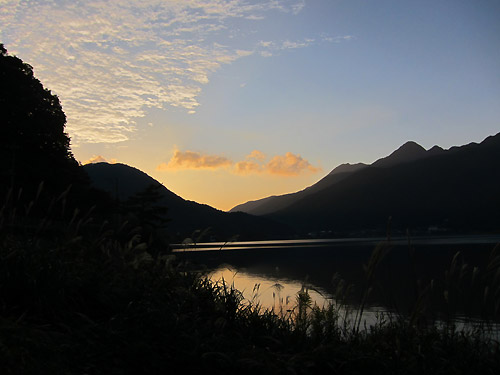
In the following days I cut nine plates.
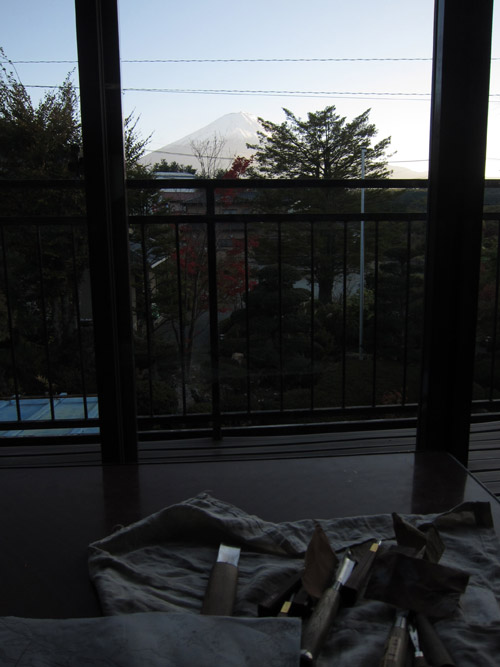
These are the plates (in printed state):
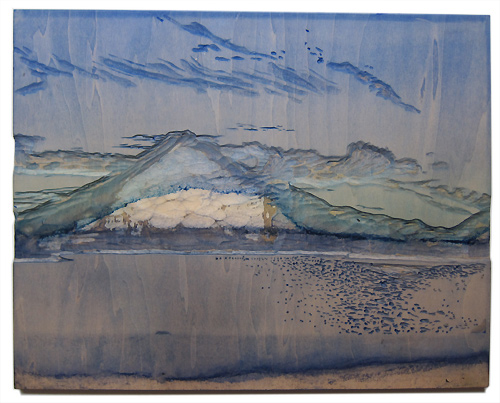
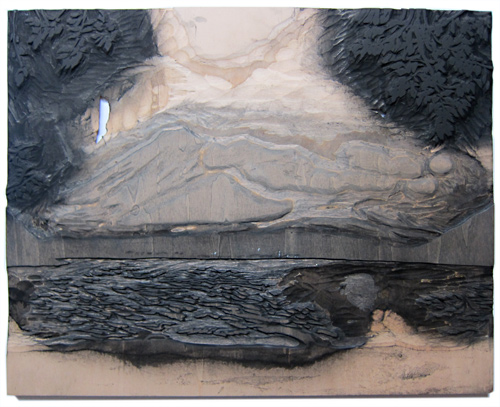
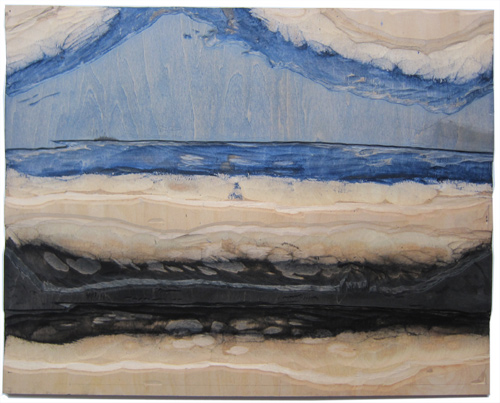
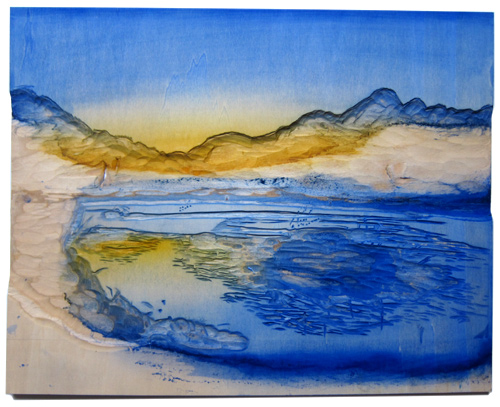
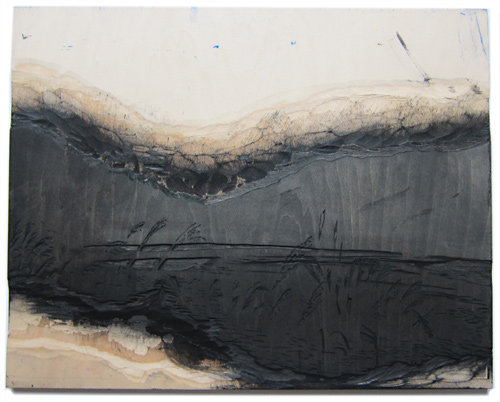
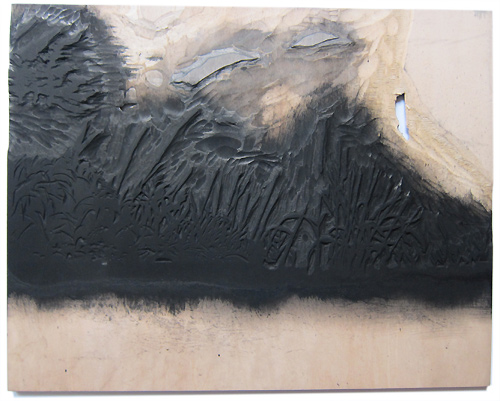
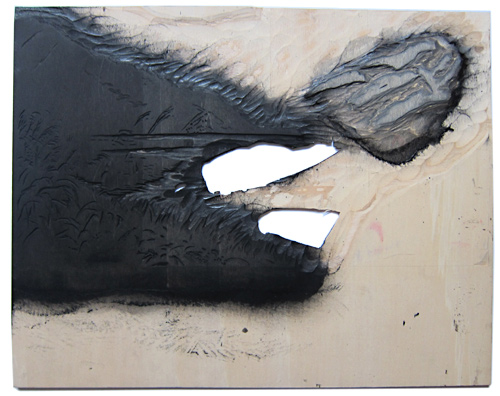
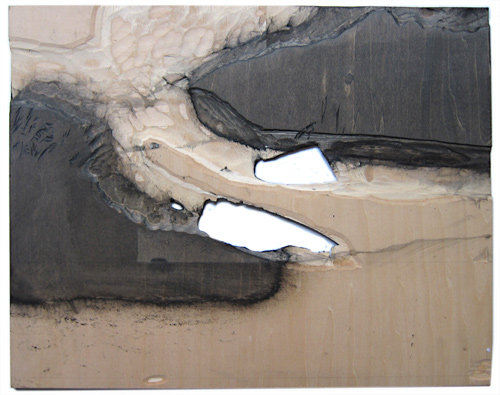
I printed proofs and started thinking about them.

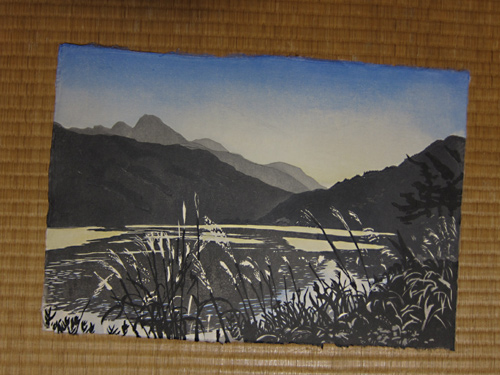
Then there was a night with heavy rain. When I opened the sliding
doors of my window in the morning, I saw snow on the mountain. Later I went
to the spot where I had done the sketch for the print, to check if it would
be good to cut the snow out of the plate.
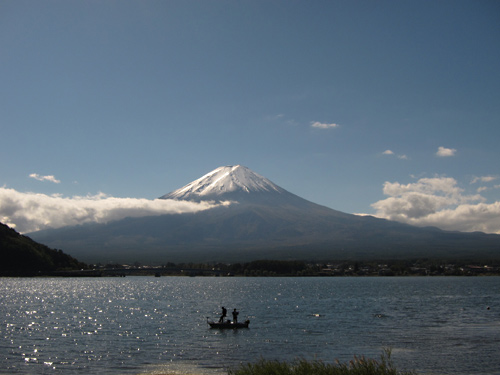
But I decided against it.
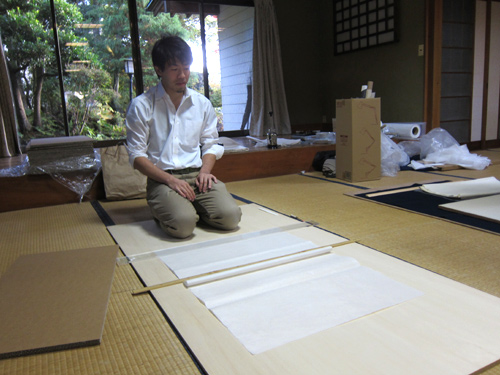
Part of the program was a class in paper-mounting, ura-uchi,
and an approach to creating a screen, byobu. Ura-uchi is significant
in the area of working with paper. Works of art on paper are mounted on other
papers for strengthening them, and they are attached to folding screens or scrolls,
or bound to books. The class should broaden the participant's view on the surrounding
of the woodblock print, which is just a part of a big organic whole.
Our teacher was Mr. Yasuhara aus Tokyo, specialist for traditional
Japanese painting as well as screen and scroll making. For practical experience,
we build a simple screen with his help. We learned how to make glue, how to
cut and tear paper the traditional way, mounting paper and building a screen
the traditional paper hinges.
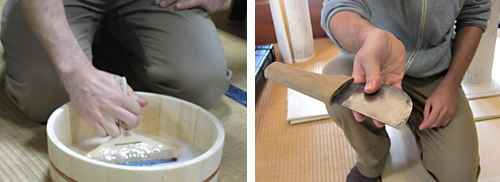
Holding the glue brush and the paper knife
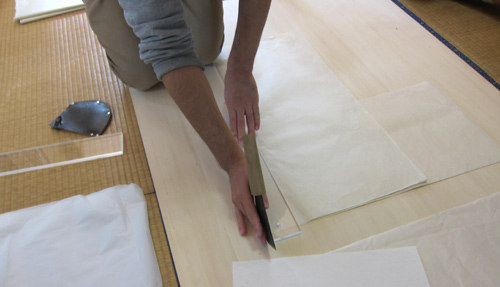
Cutting paper
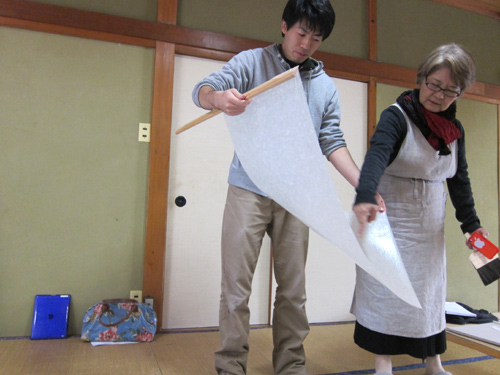
Positioning a glued paper alone (Mr. Yasuhara und the program director, Mrs.
Kadota)
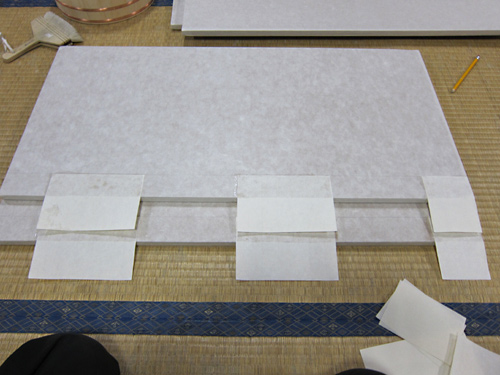
Paper hinges
I learned many new things.
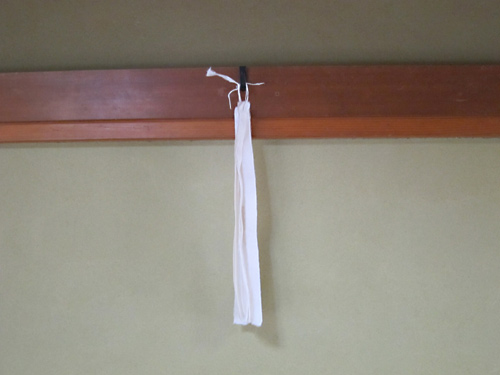
Ready for use: paper remains are bound with a paper rope and hung.
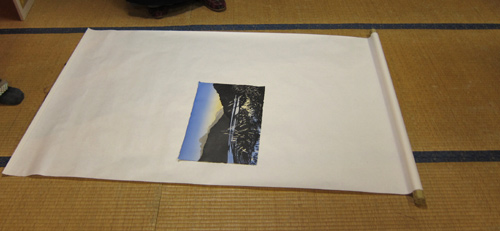
Transportable, safe support for paper works: paper attached to a wooden stick
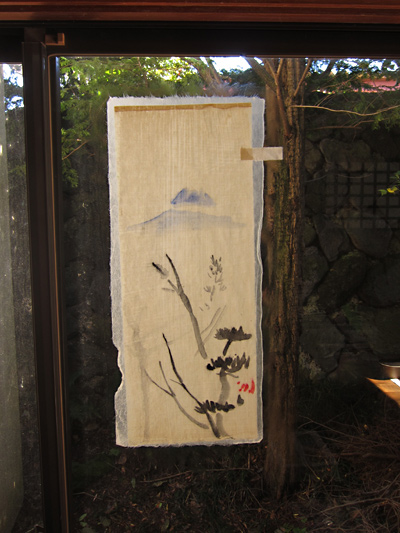
Smoothing wavy papers: the slightly damped paper is brushed onto a window, with
paper strip for pulling off.
In the last week I editioned my two prints.
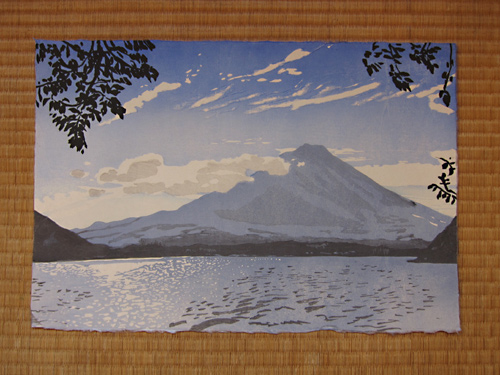
"Mt. Fuji", a variation around the theme of the mountain's
triangle form
Woodblock print, 30 x 45 cm
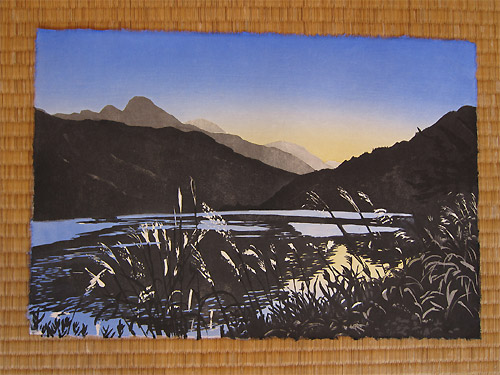
"Lake Kawaguchiko", a composition on the suzuki
grass's form with the element of the long straight and the small bowed
Woodblock print, 30 x 45 cm
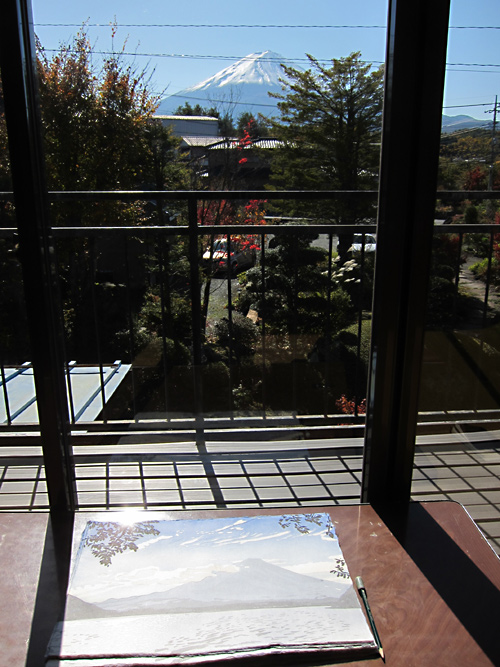
It was the beginning of the last week. By midweek, the teacher
would come to help us finishing our screens by gluing prints onto them. I wanted
to try to create two prints for the screen's back. I went to the lake and drew
in a field with suzuki grass. The grass was moving slowly, fog was lying on
the mountains.
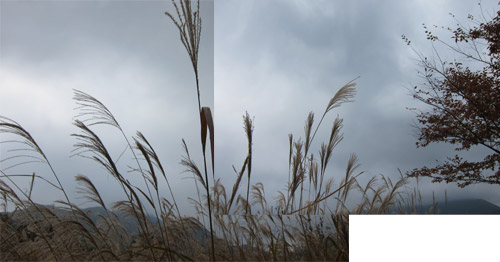
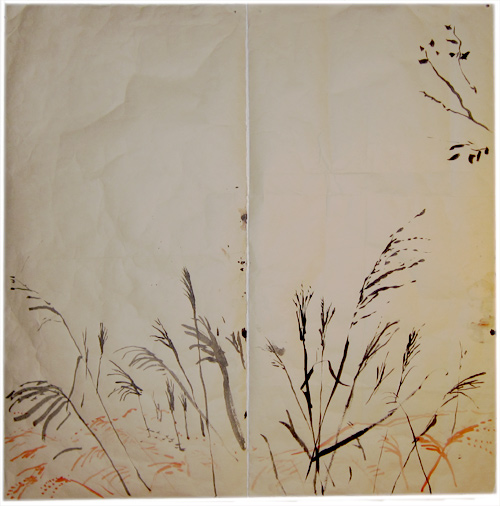
I managed to finish only one print.

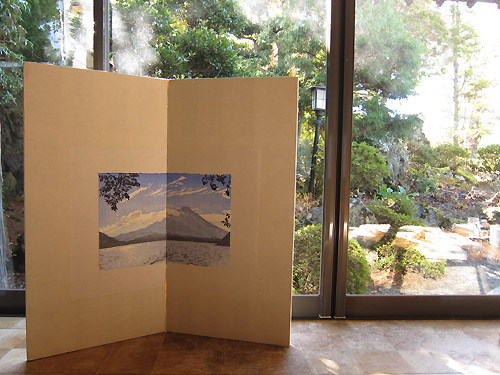

The unfinished back
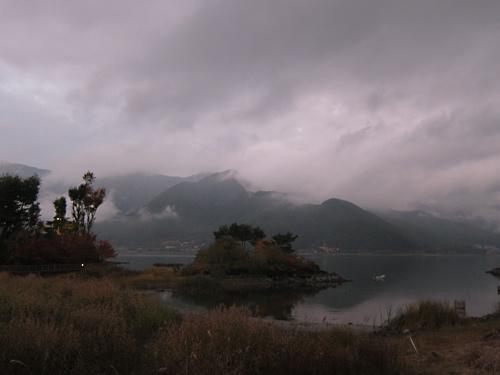
It was Autumn.
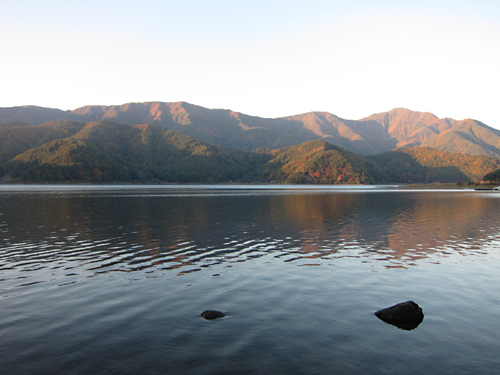
I had to say goodbye.
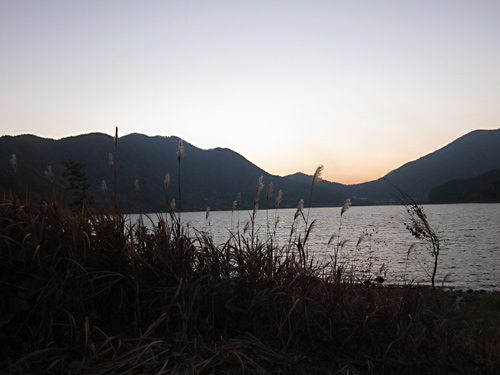
I can't walk on the lake anymore, but I can see mountain and
lake from my sofa.
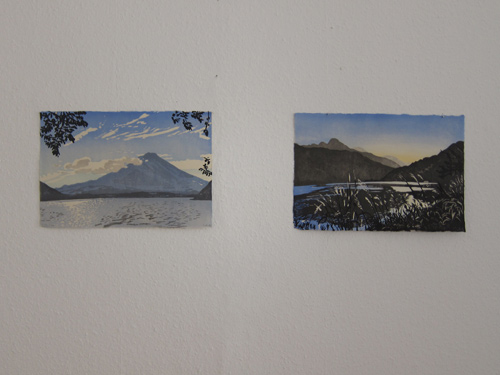
I want to give my sincere thanks to  MI-LAB, Mrs.
Kadota, the teachers Mr. Sekioka und Mr. Yasuhara, as well as all others who
had contributed to this program.
MI-LAB, Mrs.
Kadota, the teachers Mr. Sekioka und Mr. Yasuhara, as well as all others who
had contributed to this program.
Berlin, January 2013
 |